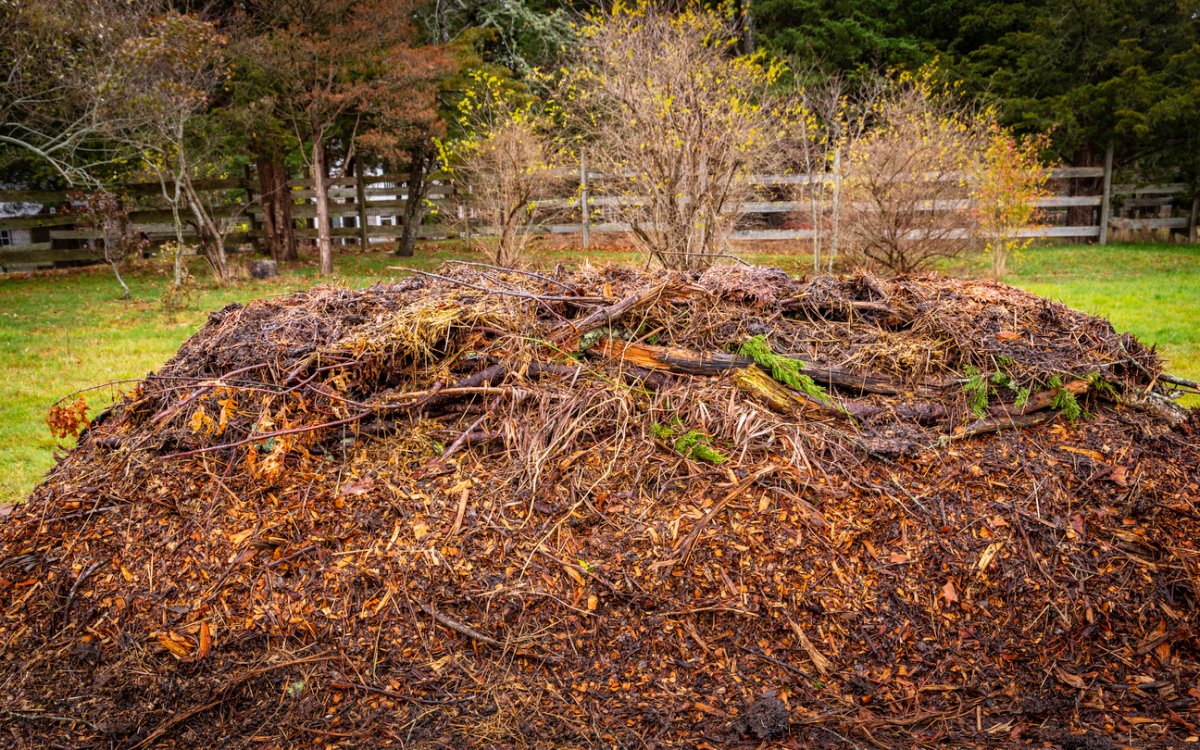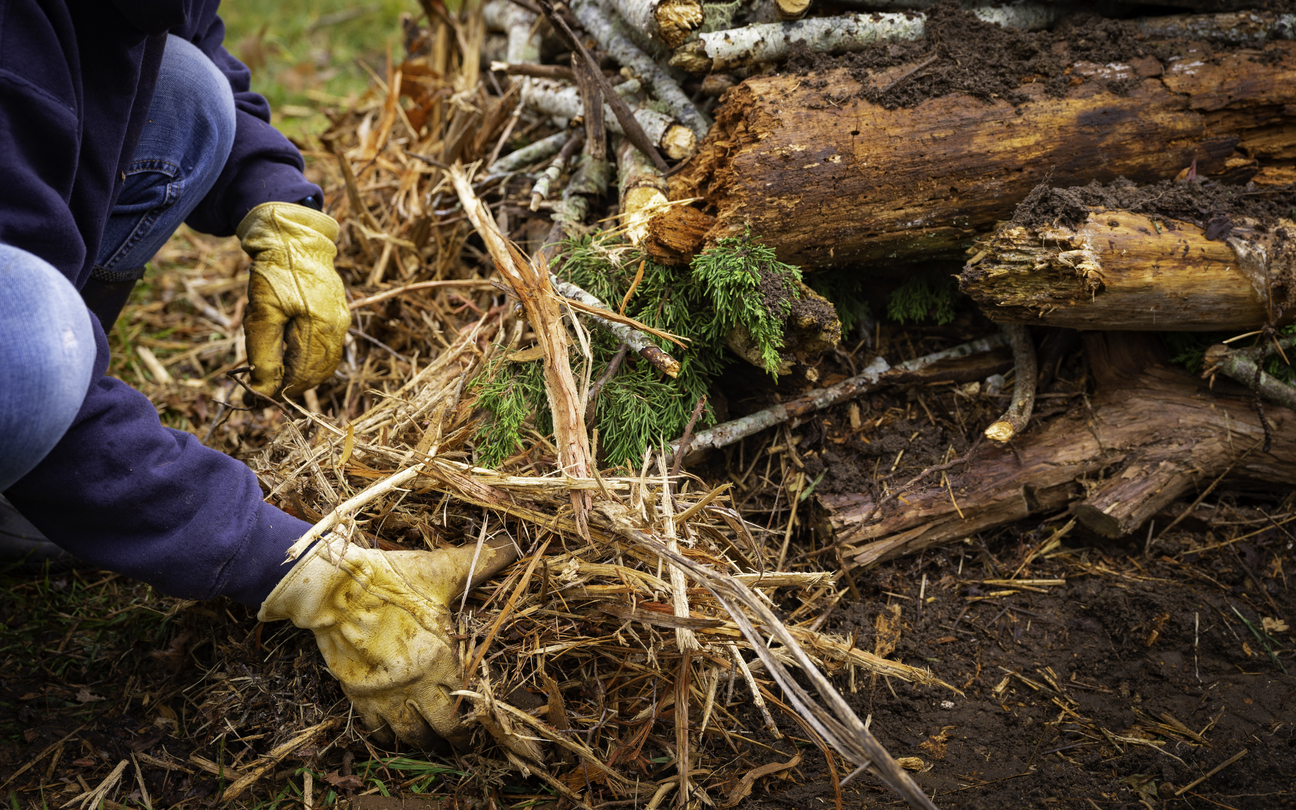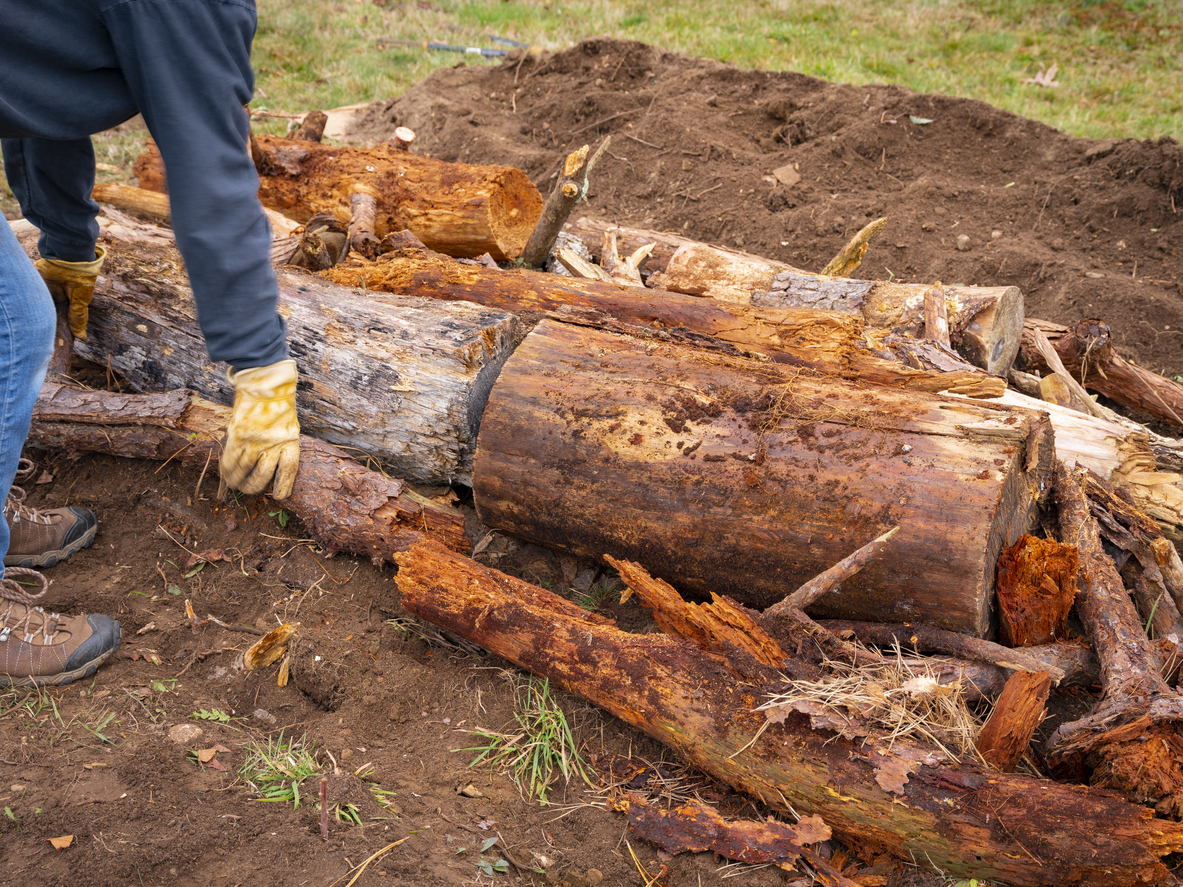

We may earn revenue from the products available on this page and participate in affiliate programs. Learn More ›
There’s something magical, even miraculous, about shepherding tiny seeds through the process of germination and growth. Gardeners reap plenty of tangible rewards—nutrient-rich and delicious vegetables and flowers that boost a home’s beauty inside and out—but this popular hobby provides benefits that go far beyond the salad bowl.
For starters, soaking up the sun and digging in the dirt can promote improved physical and emotional health. Gardening has been linked with boosted mood, better sleep, powerful stress relief, decreased anxiety and depression, enhanced cognition, and even a reduced risk of certain types of cancers.
Are you ready to take your gardening to the next level? Looking for a way to bolster your backyard crops while also giving back to the earth and the ecosystem? A permaculture practice called “hugelkultur” might just transform your relationship with Mother Earth.
1. Hugelkultur is a traditional permaculture system used in Eastern Europe and Germany.
Hailing from Germany (but practiced all across Eastern Europe, and increasingly in North America), hugelkultur (HOO-gul-cul-toor) is an old-world approach to gardening that sees your raised bed and—well, raises it. Rather than a flat-topped rectangle like the typical raised beds found in many American backyards, hugel beds are giant mounds of earth built up with beneficial biomass.
The beds’ height (typically 3 to 5 feet, but sometimes higher) and their sloped sides mean they’re easy to access for planting, weeding, pruning, and harvesting. Hugel beds are strategically designed to make the most of small spaces, since their 3-D structure supplies ample surface area.
The key difference between a hugel bed and a traditional raised bed, however, is what lies beneath the surface.

2. Hugelkultur is a way of building a garden bed from rotten wood and plant debris.
The heart of the hugel bed conceals a fertile secret: dead, decaying wood. Logs and large branches pull double duty, providing both physical structure for the bed and a steady supply of moisture and nutrients to the plants growing above. Other types of woody biomass—smaller branches, brush, sticks, twigs, wood chips, and sawdust—can fill in the gaps before adding additional layers to bulk it up and insulate the core. These layers can consist of compost, manure, straw, leaf litter, grass clippings, and even manmade biodegradable materials like cardboard.
Some hugelkultur practitioners build their beds directly atop the earth; others dig a trench that’s roughly 12 to 16 inches deep. Often, the gardener will remove and put aside several square feet of turf, construct the mound, then invert the turf on top for a no-waste layer of topsoil.
RELATED: How To: Plant a Food Forest for Foraging at Home
3. Hugelkultur improves soil quality and drainage, as well as its ability to retain moisture.
Depending on the type of wood used and the size of the bed, a hugelkultur gardener can expect their carefully constructed system to sustain itself for up to 20 years, with no more work than that required by an ordinary backyard plot. Worms, fungi, microorganisms, and beneficial bacteria go to work as the wood breaks down, improving soil fertility and delivering nutrients to nourish the plant roots. Since decomposition also creates heat, hugelkultur extends the growing season, a perk that avid gardeners are sure to appreciate.
The woody materials that form the core also retain, then release, rainwater. Essentially, they act as a sponge, and such an effective one that after the first year or so, gardeners might never need to irrigate the bed. Hugelkultur setups are a smart solution for drought-prone zones and can even work in arid climates.

4. Hugel beds use wood that would otherwise be wasted.
Few, if any, gardeners fail to take into account their carbon footprint when planting and pruning. Another appealing aspect of hugelkultur is its zero-waste approach, which gleans as much good use as possible from decaying wood and other materials. It simply makes sense to incorporate materials that would otherwise be discarded, like dead and dying tree limbs, grass clippings, leaf litter, and of course compostable household waste. Think of it as permaculture’s answer to “nose-to-tail” cuisine: “root-to-rot” gardening.

5. Hugelkultur is highly effective in urban areas.
People who don’t have ready access to acres of outdoor space need not give up their visions of plump, sun-warmed heirloom tomatoes or freshly harvested herbs. Container gardening is a popular option for small yards, poor soil, or an arid climate, but in some circumstances, hugel beds might be even better. That’s because their 3D nature creates more viable surface area for planting, therefore maximizing the available square footage.
The fact that hugel beds come complete with their own irrigation and fertilization systems is another tremendous asset that urban gardeners can use to their advantage.
RELATED: Composting 101: How to Put Kitchen and Yard Waste to Work in Your Garden
6. Hugelkultur mimics nutrient cycling.
You may or may not remember learning about nutrient cycling in Earth Science class, so here’s a little refresher. Nutrient cycling, sometimes called ecological recycling, refers to the exchange of organic and inorganic matter between living and nonliving organisms.
The hugelkultur ecosystem efficiently recycles carbon, nitrogen, phosphorus, sulfur, and other components. Once the gardener sets the natural process in motion, the beds will eventually benefit from benign neglect.

7. Hugelkultur gives the best results when prepared a few months in advance.
Just as with composting, one of the most vital components of this gardening method is time. Allowing hugelkultur beds to “cure” for a few months before planting will yield better results.
While you are waiting, why not take the time to shore up the beds by creating a border at the base with hay bales, large stones, bricks, or even recycled metal? Or, if you have pallets that aren’t already destined for DIY projects, press them into service to lend support and structure to the bed.
